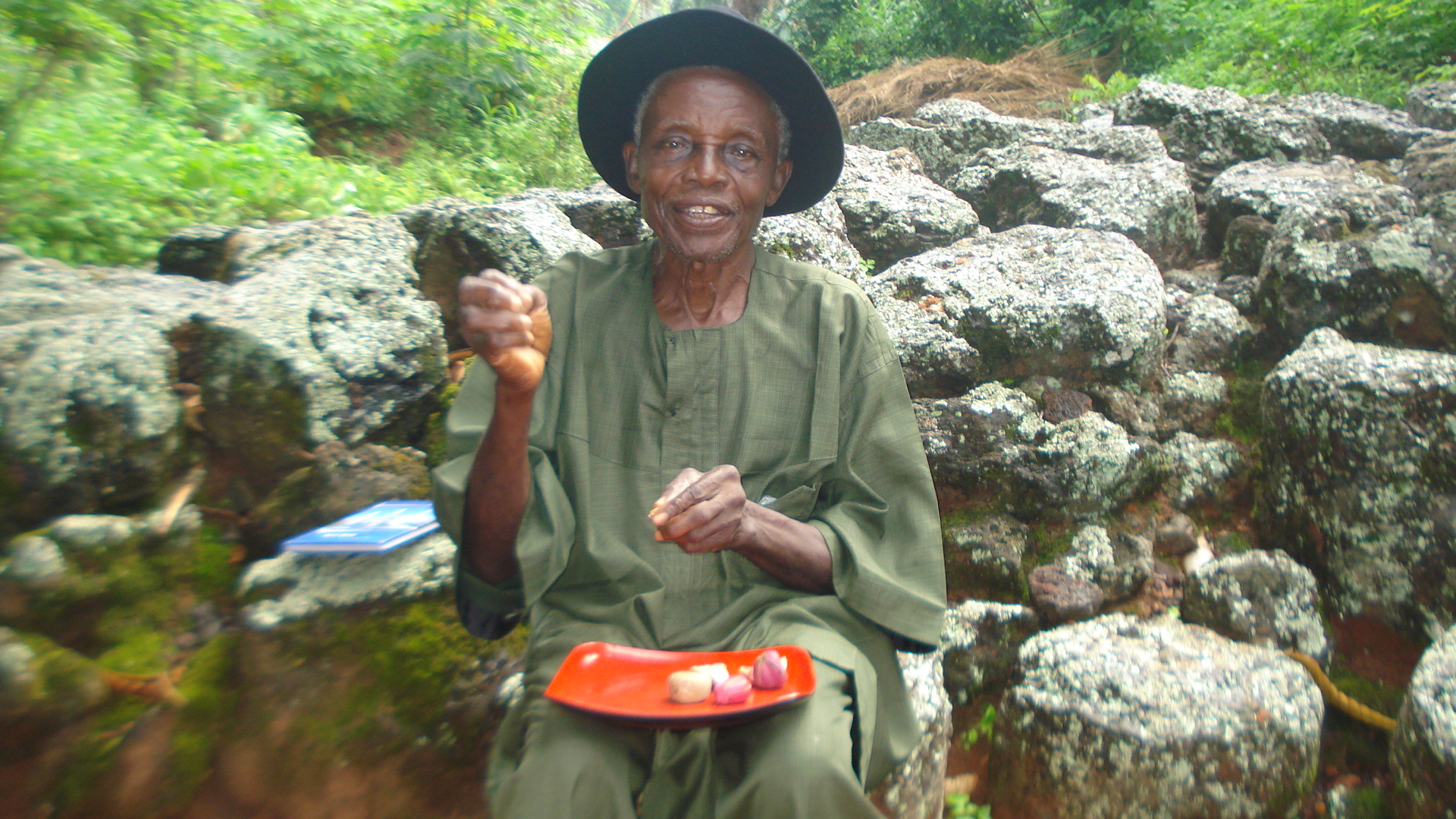By Tony Adibe, who was at the site in Enugu State
The un-tarred, rustic, rough road stretches from Nsukka, the university town, to Lejja, a remote agrarian community well-known for blacksmithing, though popularized the more by the discovery of one of the world’s oldest iron smelting site in it. The site dates back over 2000 years before the birth of Jesus Christ, according to scholars. Lejja is about a 45-minute drive from Nsukka urban town, but I drove up to an hour because there was a downpour which made visibility poor, although the car wiper was working at its peak. The road was almost submerged with flood, thereby making driving more cumbersome.
During the census before the last one, the population of Lejja community was said to be about 247,000. Lejja’s neighours include Ozalla, Ohodo and Aku in Igbo-Etiti Local Government Area. Also, Nkpologwu in Uzo-Uwani Local Government Area is a neighbour to Lejja just as Obigbo and Edo-Oballa and Nsukka proper – all in Nsukka Local Government Area, according to a lecturer in the Department of History and International Studies, University of Nigeria, Nsukka, Dr. Christian C. Opata.
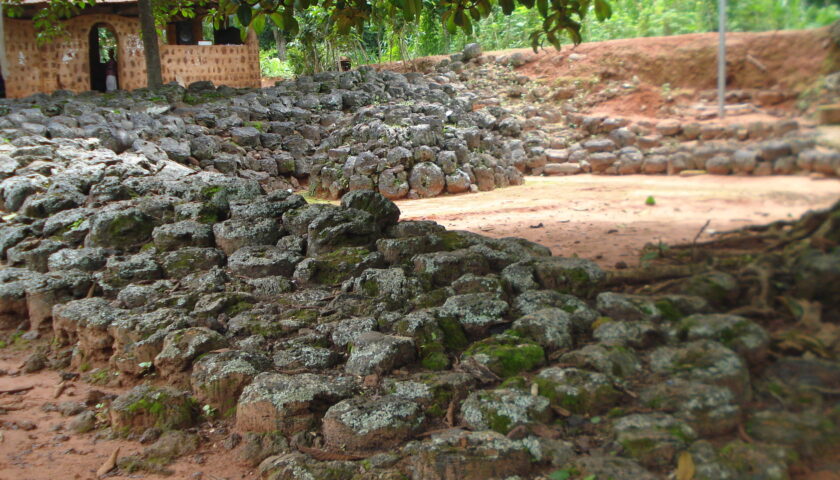
My guide, a commercial motor-cycle operator (okada rider), Abel Asogwa, at a point could not ride in the heavy rain. He parked his motorbike at someone’s shop and joined in my car.
“The rain is increasing, and I am almost freezing,” he confessed as he jumped into my car. He was properly drenched. We continued moving, meandering slowly as the road now appears smaller and snakes into a village path. I am from Dunoka Lejja, the village where you are going to,” Abel told me. “Thanks so much. That probably makes my job easy,” I replied. Abel spoke again: “Many people have been coming here; even white people have visited the site.”
At last, we got to Dunoka village and behold the world’s oldest iron smelting site, Otobo Ugwudinoke, Lejja was starring us in the face! The spot was more like a village square with the century-old columns of stones of various sizes arranged orderly in a near semi-circle format. Also at the square is the village hall built by the present generation of the natives. Besides, the square boasts of a tall, pillar-like structure with parts of the plastered-wall peeling off apparently due to old age and lack of proper maintenance.
SACRED STONES:
Mr. Sunday Odenyi, a native of Dunoka village was the first person my guide, Abel contacted as soon as we reached the spot. But before Odenyi went to call the oldest man in the village, he volunteered a useful information about the very many ancient stones well-arranged in ithin the village square.
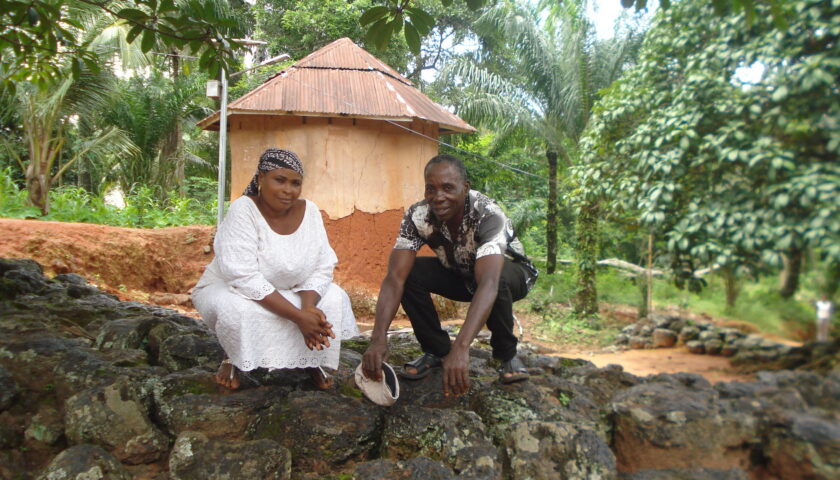
Odenyi said: “There are some of these stones you cannot touch even if you are an indigene of this place because the stones are sacred. People profane the stones knowingly or unknowingly; but there are certain things they have to do to appease the gods of the land.”
In an interview, the oldest man in the village, 75-year-old elder Boniface Ugwoke Nwani said: “The structure you are seeing there is called Okiti Omaba. It is the shrine of Omaba. We Lejja are the only people who have both Omaba and Odo as cultural practices. Nsukka is known for Odo only while Lejja celebrates both Odo and Omaba. Our neighbours living around us can only practice Odo or Omaba only.” The Okiti Omaba is the pillar-like structure which serves as the shrine of Omaba and Odo deities the area is identified with.
LEJJA’S GENESIS:
In the Dunoka Village diary with the caption “Otobo Ugwu Dunoka, The Ancient City Visitor’s Diary” the people gave insight into their history which is summarized thus:
“Dunoka is the capital city of Lejja kingdom, Africa. At Dunoka, the law that governs the entire Lejja is made; Ugwoke the father of Lejja has no known human origin.
“Lejja people lived on the top of hills and sometime, down the valley. It is a known fact that Lejja has never been defeated in the ancient wars. The people of Lejja has link with Nri in Anambra State, hence they share some cultural activities in common. They were normally entertained at Otobo Ugwu where they eat and dance to cultural music and displays.”
Again, the university don, Opata provides on his website a rather historical insight into Lejja and the efforts so far made by archaeologists to investigate the area thus: “The attempt to properly date the iron-age Lejja site has been the concern of some archaeologists for the past few decades. The latest archaeological investigations of the area revealed that artefacts could be found at depths below one metre. Excavation of such completely concealed features may involve much futile digging which is prohibited at most locations in the community.
“To avoid discontinuity of the research resulting from environmental restrictions, we have adopted a more environmentally friendly approach; that is, geophysical mapping of the artefacts before excavation. Archaeo-magnetic data was acquired on regular 1 by 1 metre grid covering a total area of 2400 square metre using proton precession magnetometer (Geometrics model G-856AX).
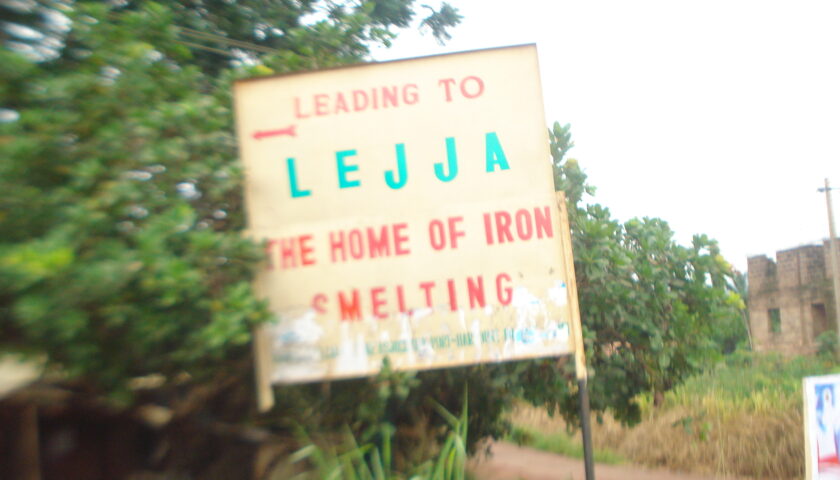
“The analytic signal software used for inversion of the field data was first validated using synthetic data obtained from Rao and Babu model. The result revealed presence of some archaeological features, perhaps, a prehistoric iron smelting furnace and a mound nearby, both remaining in-situ and buried at same depth of 1.76 metres.”
AN OLD MAN’S NARRATIVE:
Elder Ugwoke Nwani had earlier cleared his throat before blessing the kola nuts which showed that the reporter was well-come. “We can’t attend to you without offering you kola nut,” he said with a wry smile as he insisted that I should go home with three kola nuts. “They are for you,” he repeated.
Now, sitting relaxed on one of the ancient stones like a grandpa ready to entertain kids during moonlight tales, the old man went down memory lane to recall all that his father told him about the ancient heritage – the acclaimed world’s oldest iron smelting site.
He said: “I will tell you what I know because this site has been here before we were born. Even our fathers told us that they were born in the village and saw the stones. Our fathers told us that their own great grand fathers also told them that they were born and saw the stones; that their own parents told them the same thing, meaning that the stones have been in existence many centuries before our great grand fathers were even born; none of them admitted knowing when the stones were kept.
“Here is Otobo Ugwudinoke Lejja. Whenever the natives want to meet, they usually assemble at this spot after the town crier had beaten the gong and made the announcement. Assuming somebody commits any offence, this is the spot where the suspect/offender would be tried. The entire Lejja would gather here, and the person will be questioned; if he/she is found guilty, it will be announced here; if otherwise, it will also be made public here.
“Otobo has attracted white people here; even black scholars have come here to find out its essence of existence. Scholars have argued that this site had existed over 2000 years before the birth of Jesus Christ. Different scholars would come and discover various things. And all the different items discovered have their different names.” The old man paused as if he was struggling with his memory and then continued: “All these stones have their kings. They all have kings just like human beings have their kings.
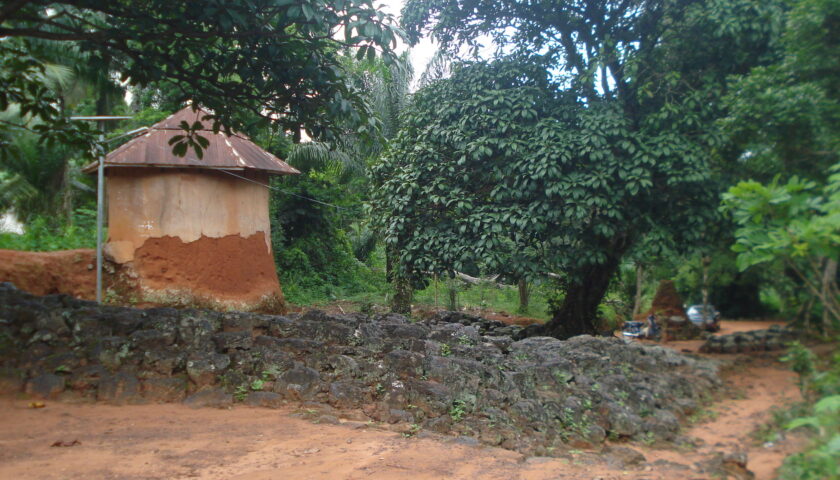
“The Lejja is rooted in many things. If you hear about the struggle for Adada State, it originated from Lejja. The place is well-known for blacksmith or smelting iron items such as hoes, cutlass, spears and arrows. There is a place we shall take you to where heavy rainfall unearthed eko, which signifies where the ancient people practiced blacksmith.
“Lejja used to go to war with arrows, spears, and knives according to our fathers. They said such wars were caused by land dispute and stealing of human beings (kidnapping). It was common among the ancient people. We were not born then, but our fathers told us so. But those things are no longer in vogue nowadays.
“Some years ago, when the white people came here, we used to dig holes outside this site; there was a particular day, we were digging and suddenly we dug out human bones. We didn’t know it was a grave. Those white people used carton, picked and packed those human bones which they took to their country. They said those were bones of the ancient people; and that they wanted to find out in their laboratory the type of food those ancient people ate during their lifetime.”
As if to add credibility to the old man’s narrative, the traditional ruler of Lejja, His Royal Highness (HRH) Igwe Anthony Ochike, Chineyereugo 1 of Lejja Community in Nsukka LGA, Enugu State recalled that since after the Biafra-Nigeria war, scholars have been visiting the area to dig and make some experiments. But he regretted that none of those scholars could hand over to the natives the items so unearthed.
The royal father emphasized that he is keenly interested in seeing the site developed into full-blown tourists’ centre not just because the place is his home but to prove the point that the black Africans had existed and developed their iron technology over 2000 years even before the birth of Jesus Christ.
Igwe Ochike said: “And the problem that time was that none of those who were coming could give us the items they dug out of the place; they went with them…both those who came from the University of Nigeria, Nsukka (UNN) and the rest of them. Until about few years ago, Prof Uzoako, I think, from UNN with one of our sons, Dr Christian Opata, came to the place. And they did dig certain areas and found out some things. And the specimen was taken to Sweden. And it was proved that the site dates back to 2000 years before the birth of Christ; that the people there were really iron smelting people.
“So, all of us were happy and we thought that the people would come to the place and show some interest. Personally, I am interested in that place, not because is my home but to show that the blacks, Africans are not the least in development; we were higher than the whites before Christ was born. This place was producing hoes, knives, bows and arrows, spears and the rest of them for war activities.
“As a matter of fact, I don’t see why people will be saying that Africa is backward; it’s just a change of evolution in the entire set up of mankind. So, I am really happy that last two weeks, people came from the ministry of culture and tourism, from Abuja and the rest of them, to show that they are interested in trying to beef up the place.
“If you go to that place, is very interesting; there are places you see the furnace, the pots and the rest of them for smelting iron in those days.
“I feel that if the place is developed, it will benefit not only Enugu State but the black man in general, and it is very important because I can remember when I was in Britain from 1975 to 1981. The artifacts in the British various museums are very, very interesting. People pay to buy tickets to visit such museums and such things bring up the image of Britain. So, I don’t see why this place should not be nationalized and things done in the proper way.”
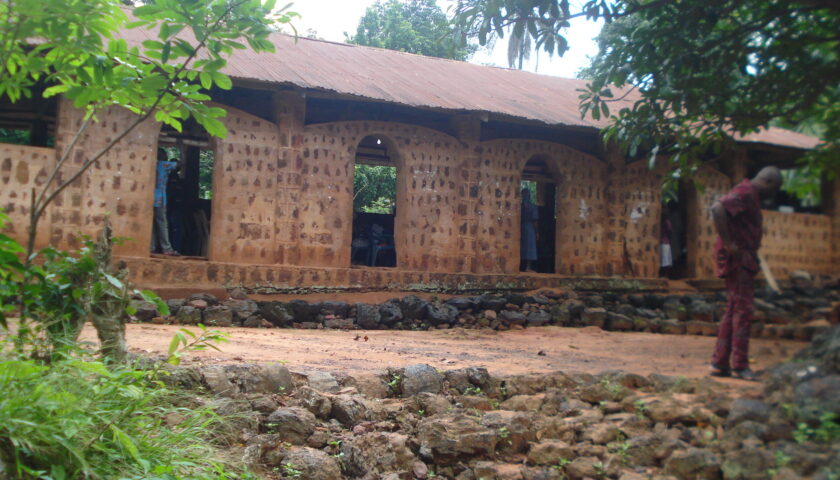
A native of Lejja, Dr Opata, who spoke in a brief telephone chat with Daily Trust, described the iron smelting site as “the pride of Africa,” in the sense that it showed that Africa, even way back to 2000 years before the birth of Jesus Christ, had not only existed but also were deep-rooted in iron technology. He explained that iron is the beginning point of technology, stressing that iron smelting developed independently from Lejja community many centuries ago. In one of his scholarly writings concerning the ancient historic site Opata further stated:
“Ejuona site is an integral part of Lejja archaeological site, a well-known prehistoric iron smelting site in south-eastern Nigeria. The researcher, who dated Lejja site as earlier than 2000 B.C. emphasized the need for intense archaeological research in the area to recover more dates and clarify some claims about the origin of the iron smelting technology in the sub-Saharan Africa.
“The earlier excavations that were done in other parts of Lejja made use of exposure of the outlines of the artefacts, particularly furnaces, caused by erosion cuts. Since a large number of such features are more deeply buried and may not be noticeable on the surface due to sedimentations that occurred over the centuries, their excavation can only be done through untargeted digging which may not only face environmental restrictions but may involve futile labour and damages to the cultural features beyond repair.
“It is therefore advisable that while this scientific method of tracing human history is very essential, it must be applied very selectively. A solution to such problem may be an application of a more environmentally friendly approach (the use of geophysical methods) prior to excavations.”
PASSIONATE APPEAL TO GOVERNMENT:
Igwe Ochike said: “My appeal is that I want both the state and federal government to come and take over the place. There was a man called Prof. Cami in charge of UNESCO; he was from Tanzania. He was the chairman of UNESCO funds; he wanted to do something about the site but by the time he wanted to start, he became ill; he had stroke and could not continue.
“I have the documents and publications on that place. So, I am appealing to the federal and state government to come to Otobo Ugwu so that they can develop the place and make it national tourist centre. I as the traditional ruler of this place, I will ensure that we give them enough support in terms of protecting whatever they may bring here, and make sure that they are given enough land and space for whatever they want to do at the site.”
Also, Opata said that it is essential for both the state and federal government to be aware of the ancient heritage at the site, insisting that “they should declare the place world heritage site.” He added that the fact that UNESCO has shown interest in the place was a big plus to the discovery.
Similarly, the oldest man in the village added his voice to the calls for governments’ intervention. “I would like the government to come and build a house where people would come and pay before going in to see the ancient iron sites. I would like such thing built in our community. It will bring development and make the outside world know about Lejja,” said elder Ugwoke Nwani.
GOVERNMENT INTEREST:
As a matter of fact, the Enugu State government said it has taken a major step towards protecting and exploiting the iron smelting site. At a press briefing after a presentation made to the State Executive Council by an Associate Professor in Department of Archaeology, University of Nigeria Nsukka (UNN), Dr. Pamela Eze-Uzomaka, the Commissioner for Culture and Tourism, Rita Mbah said that the Lejja iron smelting site is “one of the oldest in the world, which dates back to about 2000 BC.”
The commissioner said further that the Governor Ifeanyi Ugwuanyi-led administration “is passionate, committed and delighted at the revelation” made by Dr. Eze-Uzomaka, who she said has been carrying out research on the site.
According to Mbah, the council has in a quick response to the presentation, set up a 3-man committee that would visit the site and devise the best means of protecting it “as a world heritage centre”.
She added that the state government intends to construct the road leading to the site to be able to exploit its natural contents as “a tourism site and money-spinning venture,” stressing that a lot of other benefits are accruable from it. In similar vein, the Associate Professor told newsmen that she was at the EXCO meeting with her team to brief the state government on the outcome of their findings, saying that they “were able to get over 40 nationals from about 18 countries of the world to come and help us excavate Lejja site.”
Dr. Eze-Uzomaka explained that one of their findings was “radiocarbon dates”, which according to her, places the Lejja as one of the oldest iron smelting sites in the world.
The university don said: “This discovery means that Enugu State has one of the oldest iron smelting sites in the world and this site is being visited by so many countries of the world. I have travelled to some parts of the world, giving lectures about these sites and yet our people do not know about what they have.
“So, we have come here to tell the Government of Enugu State that we have something here in Enugu State worth protecting, because people are coming from all over the world to visit this site.” While appreciating the commitment of Governor Ugwuanyi’s administration towards the project, she also called for the collaboration of the state government with the National Commission for Museum and Monument and the Tourism board for the protection of the area as a world recognized tourism site.
DECLINING PRACTICE /CULTURE AND CHRISTAINITY CLASH:
As time and age affect most things under the sun, so also the practice of iron smelting by Lejja people has been affected adversely, especially in the present generation. One can count on one’s fingers the number of natives who still practice the art or trade as a means of livelihood nowadays.
“Now, not many Lejja people still engage in blacksmithing. Children of these nowadays, want money fast and they are not keen in taking over from their forefathers,” said elder Ugwoke Nwani.
He also recalls the near-bloody clash between some Christians and natives concerning the site. According to him, some new generation Christians were allowed to use the arena for their Christian crusade but with time they began to suggest the removal of those ancient stones (heritage) on the grounds that “they are idols”. The mere mention of such idea infuriated the natives who mobilized quickly to teach the Christians a lesson of their life, but they were fortunate to escape before the natives stormed the arena.
The old man said: “There was a time some Christians who were holding crusade here in the night; they asked for permission to have the king of the stones removed, claiming that it was idol practice. The news went round the community and the natives mobilized to chase them but before our people got to the spot, the Christian crusaders had taken to their heels. If our people had laid their hands on them, they would have realized that it was wrong of them to have suggested the removal of any of the ancient stones, let alone the king of stones. They would have been rounded up and handed over to the police for attempting to destroy ancient heritage.”
Perhaps, Opata’s remark about the village arena and the columns of ancient stones arranged there is relevant: “Ejuona village is among the locations popularly known for pre-historic iron smelting activities in Lejja archaeological site. Piles of slag blocks at the village square confirm this claim, but the iron smelting furnaces, and other smelting materials are no longer visible at the surface. The search for these, using conventional archaeological techniques has been the concern of some archaeologists for the past few decades.”
The Lejja natives have literally passed the ball into the government court. With time it would be known to the whole world, if the ear-pleasing things said by the state government through commissioner Mbah would be made a reality or just one of those ‘government’s many talks.’


